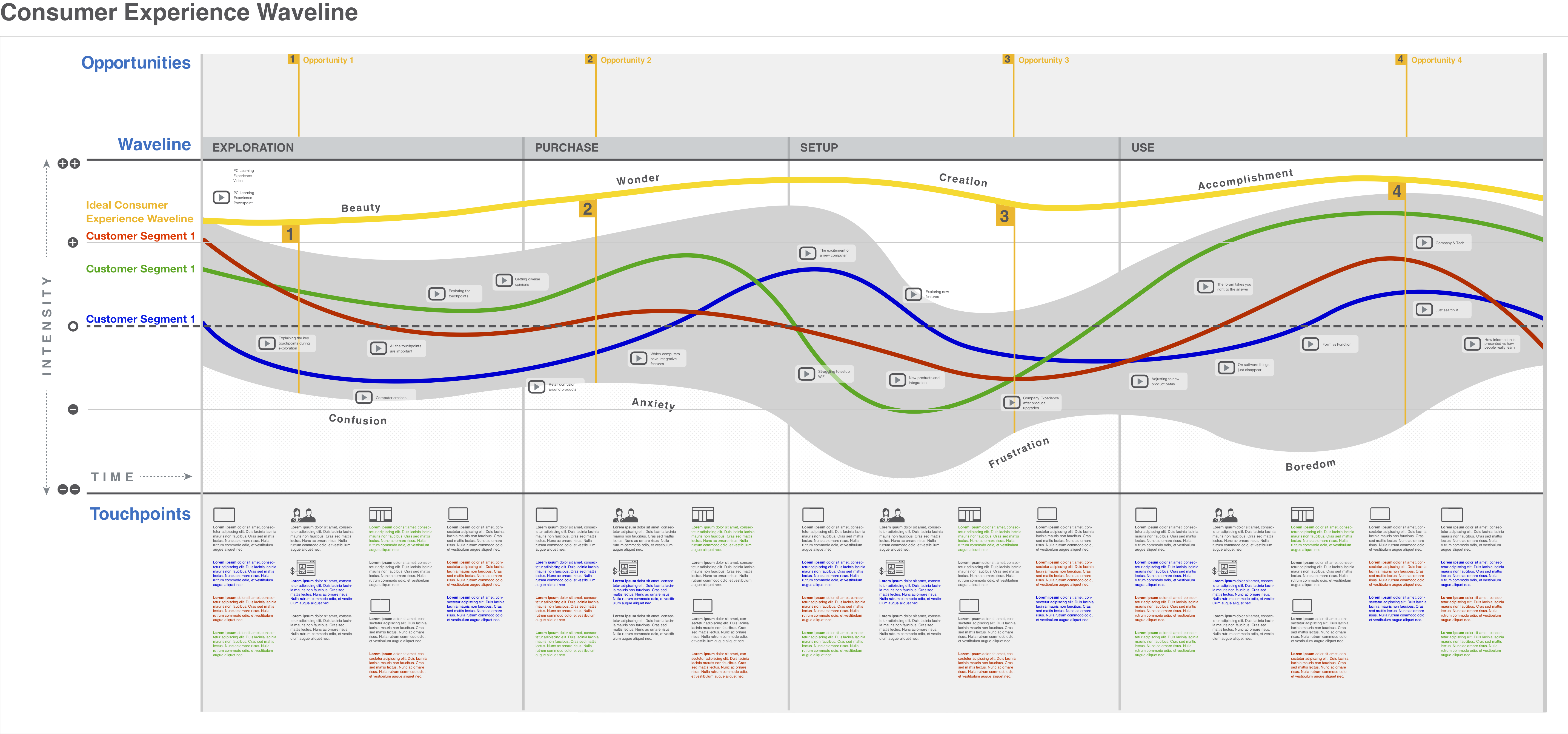…
The Waveline
…

One of the most important things that digital interface design (UX, UI, CX, etc.) brought to the business world is an understanding of how pivotal customer experience is to innovation and that there are tools for researching, understanding, visualizing, and therefore, designing better customer experiences. The customer journey map is the primary tool that businesspeople are now familiar with but it has some important limitations—chief among them is that it’s not actually built for businesspeople to use.
Instead, the Waveline is expressly designed to bridge the worlds, cultures, and understandings between business, engineering, and design peers. Where journey maps are focused on customer touchpoints and features, the wavelike is focused on customer experiences and the customer narrative that gets created in emotional and meaningful terms. It helps better align an organization’s mission and strategy for delivering value with customer desires, experience, and the decisions that driver their adoption. In this way, the wavelike is a tool for designing initial and ongoing relationships with customers (and other stakeholders) because these aren’t primarily functional. Even financial value is less impactful than emotions, identity, and meaning—at least in the long run. This makes it as much a brand value development tool as a product and service development tool and as much as a strategic planning tool for lifetime customer value.
The wavelike helps identify the biggest opportunities to engage customers because it charts and highlights where expectations fall the shortest from the reality (setting the highest-impact priorities). It also helps designers and developers of all types imagine and create customer experiences that even surpass what people expect.
There is only one book and a few workshops currently available about this tool and how to implement it. It’s been taught for over a decade in the MBA in Design Strategy program at California College of the Arts, as well as in workshops by myself and Steve Diller of Scansion. Nearly all of the DMBA’s graduates can implement the wavelike effectively. I can’t yet point to recordings online of waveline workshops. This is something I’m working on. However, the book, Blind Spot, by myself, Steve Diller, and Sean Sauber is focused entirely on the context for the wavelike as well as how to use it, in detail.
Download the Tool: Waveline Template PDF
Read the Book: Blind Spot
Workshop Slides: Using the Waveline
Presentation Slides: Using the Waveline
Related Videos: coming